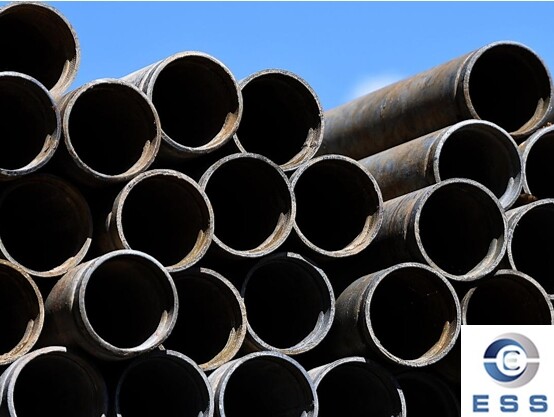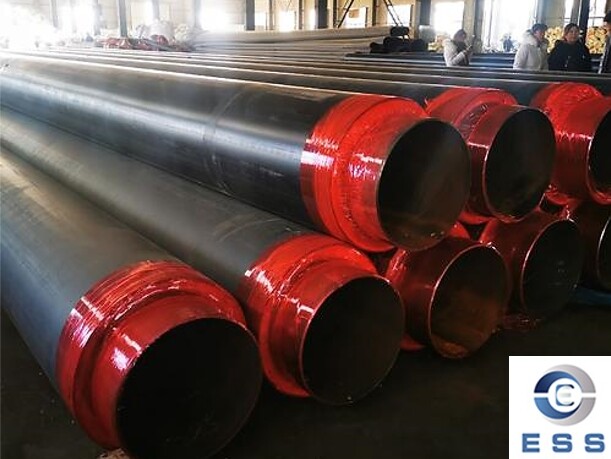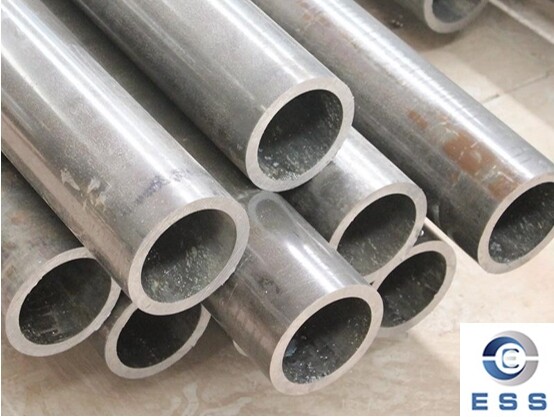What is a boiler?
A boiler is a closed device that heats fluid (usually water). Don’t actually steam the gas. The heated or vaporized fluid leaves the boiler relying on
boiler tubes, cooking, and sanitation for use in different processes or heating applications such as water heating, central heating, and power generation.
Type of boiler tube
There are two significant types of boiler tubes: water-tube tubes and fire-tube tubes.
1.Water-tube boiler tubes
A boiler with a high-pressure water tube has become a boiler in which water flows in tubes externally heated by gases. Within the furnace, fuel is burned, producing hot gas that heats water in the pipes to produce steam. In smaller boiler tubes, the furnace is isolated by external heating tubing. In contrast, larger service boilers depend on the water-filled tubing that makes up the furnace walls to produce steam.
2.Fire-tube boiler tubes
A fire tube boiler is a boiler whereby heated gasses flow from a flame through one or more tubes, flowing through a sealed water tube. The heat of the gasses is transmitted through thermal conduction through the tube walls, heating up the water and eventually producing steam. This boiler was used in the horizontal locomotive configuration on nearly all steam locomotives. This has a tubular container that holds the fire tubes and an extension to fit the one-end firebox. This firebox has an open foundation to have a wide area of the grate, stretching to create a rectangular or tapered structure outside the cylindrical container.
Requirements for Boiler Tube Materials
The materials used for boiler tubes must be carefully selected to meet the following requirements:
1.High temperature resistance and high strength
High-pressure boiler tubes are often exposed to high temperature and high pressure conditions during use. Under the action of high-temperature flue gas and water vapor, the tubes will oxidize and corrode. Steel pipes are required to have high lasting strength, high resistance to oxidation and corrosion, and good structural stability. The working conditions of high-pressure boiler tubes are very harsh. They must work safely for 10 to 20 years, or even longer, under high pressure and high temperature, erosion and corrosion by high-speed airflow, water flow, and gas.
2.Thermal conductivity
Boiler tubes, especially high-pressure boiler tubes, are pipes used to transport high-temperature and high-pressure steam or hot water and play an important role. In the design and use of high-temperature boiler tubes, thermal conductivity performance is a very critical indicator.
Thermal conduction is the process by which heat is transferred from a high-temperature object to a low-temperature object. In high-temperature boiler tubes, heat conduction occurs mainly through conduction in the tube wall. The heat conduction characteristics of the pipe wall are related to the thermal conductivity of the material, wall thickness, pipe diameter and temperature gradient.
3.Comply with standards
Materials must comply with safety and quality standards set by regulatory agencies such as ASTM, ASME or EN.
Common ASTM standards for boiler tubes include
ASTM A192/A192M: This is the standard specification for seamless carbon steel boiler tubes for high pressure applications.
ASTM A210/A210M: Covers standards for seamless medium carbon steel boiler tubes and boiler smoke tubes, including safety ends, vault and support tubes, and superheater tubes.
ASTM A213/A213M: Provides specifications for seamless ferritic and austenitic alloy steel boiler, superheater and heat exchanger tubes.
ASTM A335/A335M: Specifies the minimum and nominal wall thickness for seamless ferritic alloy steel boiler tubes suitable for high temperature service.
ASTM A450/A450M: Covers standards for minimum wall thickness, seamless carbon steel boiler and superheater tubes for high pressure applications.
ASTM A178 / ASME SA178 Resistance Welded Carbon Steel Boiler Tube
ASTM A178 Boiler and superheater tubes for electric welding of carbon steel and carbon manganese steel boiler and superheater tubes. ASTM A178 is the same as ASME SA-178 and is a standard specification covering minimum wall thickness resistance welded pipe for boiler tubes, boiler flues, superheater flues, and minimum wall thickness made of carbon steel and carbon manganese steel.
It offers three levels:
Grade A – Mild Steel
Grade C - medium carbon steel
Grade D - carbon manganese steel
ASME Standard Example: ASME SA192 Boiler Tube
SA192 is a material, specifically, it is a standard used for manufacturing high-pressure boiler tubes. This pipe performs well in high-pressure environments due to its excellent tensile strength and yield strength, as well as good elongation, and is able to withstand large pressures and stresses. The chemical composition of SA192 steel pipes is strictly controlled and mainly includes elements such as silicon, manganese, chromium, molybdenum, copper and nickel. The content of these elements has an important impact on the performance and quality of the pipe. In addition, SA192, together with SA-193 and SA-194, is classified as a standard for stainless steel, stainless iron or alloy steel.
Common materials for boiler tubes
Boiler tubes are usually made of carbon steel, stainless steel, and alloy steel.
Carbon steel tube: SA210 C
|
Standard
|
Grade
|
Application
|
|
ASME SA210
|
C
|
ASTM SA210 C pipes are widely used in 300MW, 600MW and other large-capacity power station boilers with operating temperatures below 500℃, such as water-cooled walls, economizers, low-temperature superheaters, etc.
|
Alloy steel pipe: SA213 T11, SA213 T12, 15CrMoG, SA213 T22, 12Cr1MoVG, SA213 T23, SA213 T91, SA213 T92.
|
Standard
|
Grade
|
Application
|
|
ASME SA213
|
T11
|
ASME SA213 T11 Boiler, superheater and heat exchanger tubes.
|
|
T12
|
ASME SA213 T12 tubes are widely used in 300MW, 600MW and other large-capacity power station boiler superheaters, reheaters and other heating surface pipes, headers and main steam pipes with working temperature not exceeding 550℃.
|
|
T22
|
ASME SA213 T22 steel pipes are mainly used for 300MW, 600MW and other large-capacity power station boilers with wall temperature ≤580℃ superheaters and wall temperature ≤540℃ steam pipes and headers. This steel grade has been widely used in the United States, Japan, Europe and other countries. It has a long history of operation in power plants and is a mature steel grade with stable operation and good process performance.
|
|
T23
|
SME SA213 T23 seamless steel pipe is mainly suitable for manufacturing superheaters, reheaters and water-cooled walls of large power plant boilers. When the main steam temperature is below 620℃, SA213 T23 seamless steel pipe is a better choice of material.
|
|
T91
|
ASME SA213 T91 steel pipe is mainly used to manufacture high-temperature superheaters, reheaters and other pressure-bearing parts of subcritical and supercritical power plant boilers with metal wall temperatures not exceeding 625℃. It is also used for pressure vessels and nuclear power high-temperature pressure-bearing parts.
|
|
T92
|
ASME SA213 T92 steel pipe has excellent performance and can be used at a temperature of up to 650℃. It can partially replace TP304H and TP347H austenitic stainless steel pipes to manufacture subcritical, supercritical, and even ultra-supercritical power plant boilers with metal wall temperatures not exceeding 650℃, such as high-temperature superheaters, reheater tubes, main steam pipes, etc.
|
|
GB5310
|
15CrMoG
|
GB5310 15CrMoG pipes are suitable for high and medium pressure boiler steam pipes, headers, superheater pipes with a wall temperature of 540℃, forgings and elastic elements with a steam parameter of 510℃.
|
|
12Cr1MoVG
|
GB5310 12Cr1MoVG alloy steel pipes are mainly used for boiler superheaters, reheaters and other heating surface piping systems with a metal wall temperature not exceeding 580℃, boiler headers and main steam pipes and other pressure components with a metal wall temperature not exceeding 565℃.
|
Stainless steel pipe: SA213 TP347H, SA213 TP347HFG, SUPER304H, HR3C (SA213 TP310HCbN).
|
Standard
|
Grade
|
Application
|
|
ASME SA213
|
TP347H SA213
|
TP347H stainless steel pipe can be used in high temperature and high pressure environment. The maximum use temperature of the pressure parts is 650℃, and the maximum use temperature of the anti-oxidation parts is 850℃. It is mainly used to make high temperature superheaters, high temperature reheaters, high temperature sections of platen superheaters and various high temperature and high pressure pipe fittings on large power generation boilers with subcritical and supercritical pressure parameters.
|
|
TP347HFG
|
ASME SA213 TP347HFG stainless steel pipe is mainly used to manufacture high temperature superheaters, high temperature reheaters, high temperature sections of platen superheaters and various high temperature and high pressure pipe fittings for large power generation boilers with supercritical pressure parameters.
|
|
Super 304H (S30432)
|
ASME SA213 SUPER304H (S30432) stainless steel pipe is mainly used to manufacture superheaters and reheaters of ultra-supercritical boilers with metal wall temperatures not exceeding 700℃.
|
|
HR3C (SA213 TP310HCbN)
|
HR3C steel has good high temperature corrosion resistance (steam oxidation resistance), and its allowable stress is much higher than that of ordinary SA213 TP310H steel. HR3C (SA213 TP310HCbN) pipes are mainly used for superheaters of ultra-supercritical boilers with harsh working conditions.
|
Read more: How To Weld Boiler Tubes? or The Standard of Boiler tube













 Eastern Steel Manufacturing Co.,Ltd not only improve product production and sales services, but also provide additional value-added services. As long as you need, we can complete your specific needs together.
Eastern Steel Manufacturing Co.,Ltd not only improve product production and sales services, but also provide additional value-added services. As long as you need, we can complete your specific needs together.









